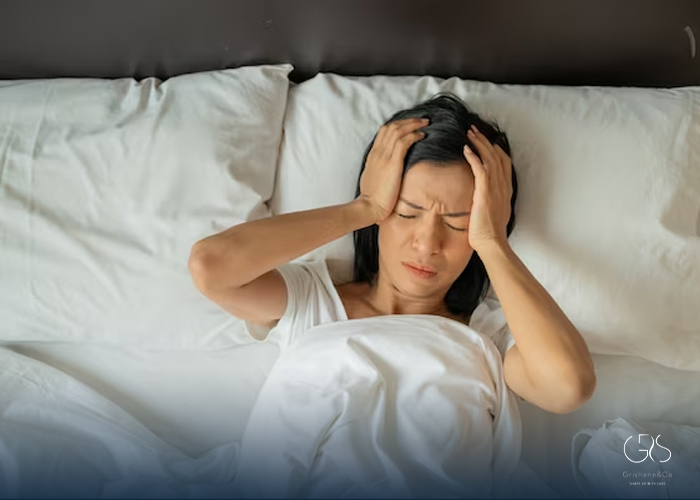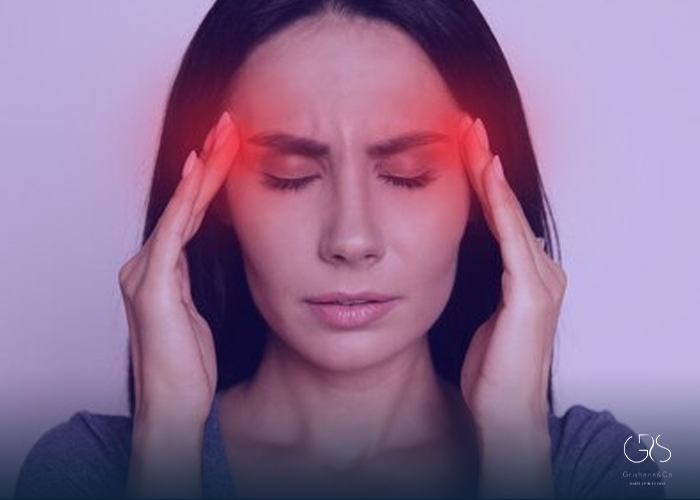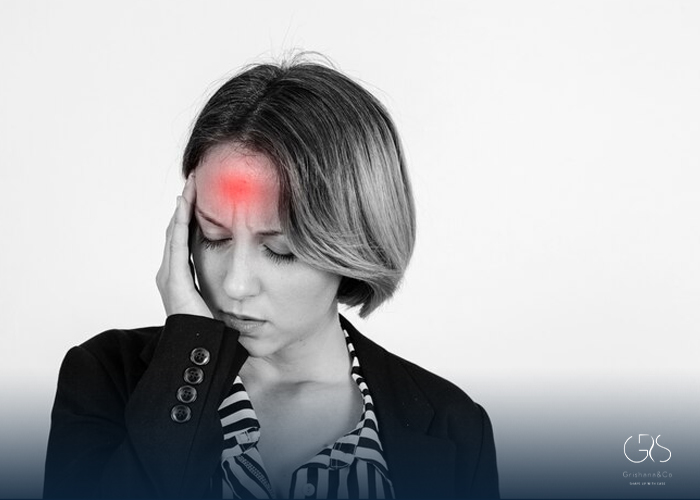Traveling should be an exciting and relaxing experience. Yet, many people find that during or after journeys—whether by plane, train, car, or boat—they suffer from travel headaches, head pain that seems clearly linked to the trip itself. Understanding why these headaches arise is the first step toward preventing or managing them. In this article, we’ll explore six scientifically backed reasons for travel headaches, explain the underlying mechanisms, and suggest strategies to reduce their frequency and severity.
1. Barometric and Cabin Pressure Changes (Altitude / Air Pressure Effects)
One of the most direct causes of travel headaches is the change in external pressure—whether in an airplane cabin, during rapid ascent/descent in mountain travel, or in tunnels.
When you fly, the air pressure around you changes rapidly, especially during takeoff and landing. This pressure difference can affect the sinuses and middle ear, causing a mismatch between internal sinus pressure and the surrounding air. That pressure imbalance can stretch tissues or trigger pain receptors, resulting in what’s known as an “airplane headache.”
Studies published in The Journal of Headache and Pain have confirmed that airplane headaches typically appear during descent and disappear within 30 minutes after landing. These headaches are due to sinus barotrauma and activation of trigeminal nerve pathways. Rapid changes in barometric pressure can also trigger vascular changes, including dilation or constriction of blood vessels, which are known contributors to migraines and travel headaches.
2. Hypoxia and Reduced Oxygenation
Another scientifically supported cause of travel headaches is reduced oxygen levels, known as hypoxia. When you’re at higher altitudes—either in the mountains or in an airplane cabin—the air pressure is lower, meaning there’s less oxygen available for your body.
Airplane cabins are usually pressurized to the equivalent of about 1,500–2,500 meters above sea level, leading to mild oxygen deprivation. For most people, this isn’t harmful, but in sensitive individuals—particularly those with migraines or cardiovascular conditions—it can lead to headaches.
At high altitudes, hypoxia can trigger acute mountain sickness (AMS), a condition where headache is one of the earliest and most common symptoms. This happens due to changes in blood flow to the brain, swelling of tissues, and the release of inflammatory mediators. Whether flying or hiking, the resulting oxygen stress can exacerbate travel headaches, especially in those prone to migraines.
3. Dehydration and Fluid Shifts
Dehydration is one of the most common and underappreciated causes of travel headaches. Airplane cabins have very low humidity—often below 20%—which promotes fluid loss through breathing and the skin. At the same time, travelers often drink less water to avoid restroom trips or because of disrupted routines.
To make matters worse, alcohol and coffee—frequent travel companions—are mild diuretics and increase urine output, worsening dehydration. Dehydration reduces blood volume and increases blood viscosity, forcing blood vessels to expand to maintain brain oxygenation. This vascular dilation is a known headache trigger.
Clinical evidence suggests that rehydrating, especially with water or electrolyte drinks, can quickly relieve mild travel headaches caused by dehydration. To prevent this, travelers should consciously drink water throughout the journey and avoid excessive alcohol or caffeine.
4. Sleep Disruption, Circadian Misalignment, and Fatigue
Another significant contributor to travel headaches is disrupted sleep. Long journeys, especially across multiple time zones, disturb your circadian rhythm—the internal clock that regulates sleep, hormones, and metabolism.
Jet lag, overnight flights, and irregular sleep schedules can all lead to fatigue and reduced REM sleep. Sleep deprivation is a well-known migraine trigger because it sensitizes pain pathways in the brain and lowers your pain threshold. Even short naps at irregular hours can cause metabolic imbalance and headaches upon waking.
Maintaining consistent sleep patterns, avoiding long naps, and aligning your bedtime gradually with your destination’s time zone can help minimize the risk of travel headaches caused by sleep disturbance.
(To learn more about Sleep Duration please refer to this article)

5. Motion, Vestibular Conflict, and Sensory Mismatch
If you’ve ever felt dizzy, nauseated, or headachy after a long car or boat ride, motion is likely the cause. Motion sickness occurs when your inner ear senses movement, but your eyes or muscles perceive stability (or vice versa). This conflict between sensory inputs confuses the brain, activating the autonomic nervous system and, in some people, triggering travel headaches.
Scientific studies on motion sickness show that the mismatch between visual and vestibular signals can stimulate trigeminal pathways—the same system involved in migraines. Vibrations, sudden swaying, and uneven motion (as in boats or mountain roads) amplify this effect.
To reduce such travel headaches, choose seats where movement is minimal—over airplane wings, near the front of cars, or at the center of a boat. Focusing on a fixed point, such as the horizon, helps synchronize your visual and vestibular systems. Research even suggests tilting your head slightly toward the direction of the curve (the centripetal direction) can reduce motion sickness intensity.
6. Diet, Caffeine Fluctuations, and “Let-Down” Stress
Changes in diet and routine are another major reason for travel headaches. During trips, many people skip meals, eat processed or foreign foods, and drink more (or less) caffeine than usual. These sudden changes can disturb metabolism and trigger headaches.
Certain foods—especially those high in tyramine, nitrates, sulfites, or histamine—are recognized migraine triggers. Common culprits include cured meats, aged cheeses, red wine, and processed foods. Irregular eating times or skipped meals can cause blood sugar fluctuations that also induce headaches.
Caffeine withdrawal is another overlooked factor. If you normally have two cups of coffee daily but skip them during travel, you might experience withdrawal headaches within 24 hours. Conversely, increasing caffeine suddenly can also lead to vascular changes and trigger headaches.
Finally, the phenomenon known as “let-down headaches” often strikes at the start of vacations. When stress levels suddenly drop after a busy period, the change in cortisol and neurotransmitter balance can precipitate a migraine. Maintaining moderate activity and relaxation practices can help smooth the transition and prevent travel headaches.

Understanding the Six Main Causes Together
In summary, six major mechanisms contribute to travel headaches:
- Rapid pressure changes causing sinus or ear barotrauma.
- Reduced oxygen availability (hypoxia) from high altitude or cabin environments.
- Fluid imbalance and dehydration during long trips.
- Sleep loss and circadian rhythm disruption leading to fatigue.
- Motion and sensory mismatch triggering vestibular stress.
- Sudden changes in diet, caffeine intake, or stress levels.
These causes often interact. For example, flying combines several at once: dehydration, hypoxia, cabin pressure shifts, and sleep deprivation. Understanding this interplay allows travelers to prepare better and protect themselves.
Prevention and Management of Travel Headaches
To minimize travel headaches, consider these scientifically grounded strategies:
- Equalize pressure gradually: Chew gum, yawn, or use the Valsalva maneuver during airplane descent. Avoid flying when congested.
- Stay hydrated: Drink water regularly, limit alcohol and caffeine, and carry a refillable bottle.
- Maintain oxygenation: Ascend gradually at altitude and use supplemental oxygen if symptoms appear.
- Prioritize sleep: Adjust bedtime before travel, block out light, and rest adequately before long trips.
- Reduce motion triggers: Sit in stable positions, look forward, and consider preventive medication for motion sickness if prone to it.
- Keep meals and caffeine consistent: Eat at regular times and maintain your normal caffeine pattern.
- Manage stress: Practice breathing techniques, mindfulness, or short walks during layovers to stabilize stress levels.
In frequent travelers, NSAIDs or migraine-specific medications (like triptans) may help if prescribed by a physician. Preventive care is especially important for those with a known migraine history.
When to See a Doctor
Most travel headaches resolve within hours. However, seek medical help if the pain is sudden and severe, lasts longer than a day, or occurs with neurological symptoms (like weakness, confusion, or visual disturbances). A healthcare provider can evaluate whether your headaches are travel-related or due to another underlying condition.
Conclusion
Travel headaches can turn an exciting journey into an exhausting ordeal. Yet, by recognizing their main causes—pressure changes, low oxygen, dehydration, lack of sleep, motion, and dietary shifts—you can take preventive steps to protect yourself. The science is clear: with proper hydration, rest, and awareness, you can make travel smoother and more comfortable for your body and mind.
Sources
- The Journal of Headache and Pain, Headache attributed to airplane travel
- Current Pain and Headache Reports, Headache and Barometric Pressure: a Narrative Review
- Medical News Today, Travel headaches: Types, treatment, management









